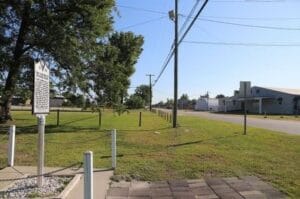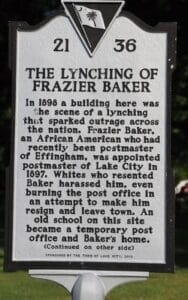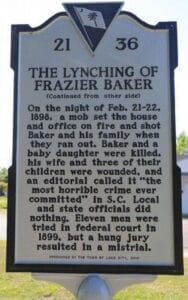National Register
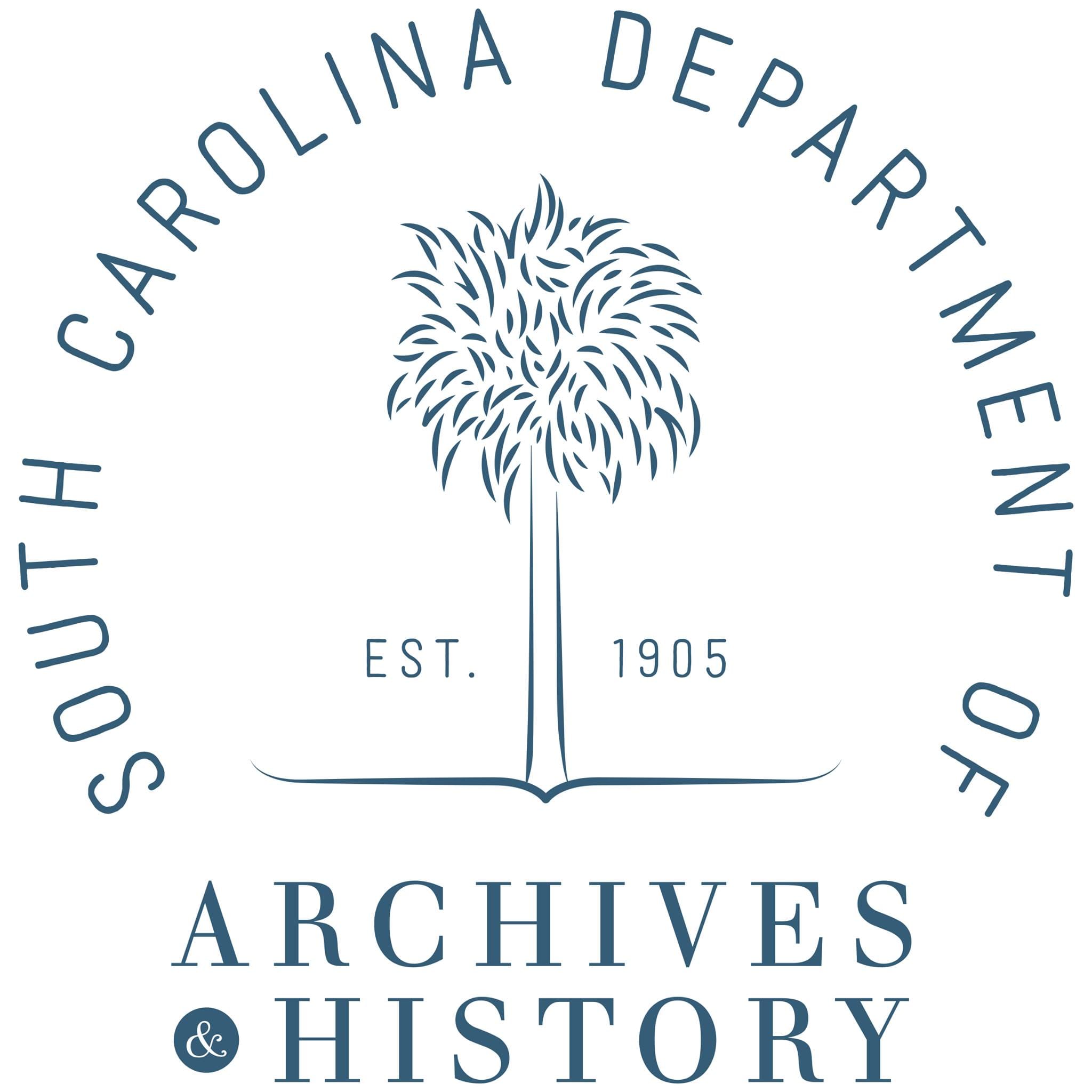
Discover historic sites in the Pee Dee region of South Carolina, listed on the National Register of Historic Places, with rich cultural and architectural significance.
The information in this section was retrieved from the South Carolina Dept. of Archives and History, as well as the South Carolina African American Heritage Commission.
Darlington Memorial Cemetery (HM)
Avenue D and Friendship Street, Darlington
N 34° 18.087 W 079° 51.378
The Darlington Memorial Cemetery, also known as the Darlington Community Cemetery or the Darlington City Cemetery, is significant as the first cemetery established for the African-American community of Darlington and for its association with many prominent black citizens of the town from the late nineteenth through the twentieth centuries. It is also an intact example of a cemetery reflecting typical burial customs and gravestone art during this period. The cemetery dates from 1890, when the trustees of Macedonia Baptist Church Cemetery purchased a five-acre tract to establish a cemetery for members of the church and other members of Darlington’s black community. Until 1946 it was the only African-American cemetery within the city limits of Darlington. It was expanded by four additional acres in 1946 with the Bethel A.M.E. Church Cemetery and the St. James Methodist Church Cemetery were established and laid out adjacent to it, adding two acres each for a total of approximately nine acres. These three cemeteries are collectively known as the Darlington Memorial Cemetery, still the primary cemetery for the African-American community in Darlington.
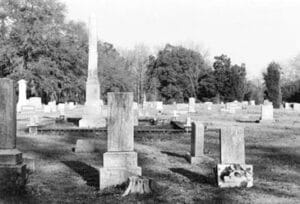
Edmund H. Deas House (HM)
229 Avenue E, Darlington
N 34° 17.729 W 079° 51.755
After moving to Darlington County in the 1870s, Edmund H. Deas served as county chairman of the Republican Party for a number of years and was a delegate to four national conventions. A black candidate for Congress in 1884 and 1890, Deas was Deputy Collector of Internal Revenue in S. C., 1889-94 and 1897-1901. This house was his residence at his death in 1915.
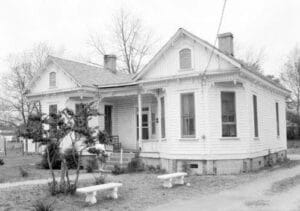
Henry "Dad" Brown (HM)
US Hwy 52 and Brockington Rd.
N 34° 17.366 W 079° 52.966
Henry “Dad” Brown (1830-1907), a black veteran of the Mexican, Civil, and
Spanish-American Wars, is buried 75 feet north with his wife Laura. Variously said to have been born free or born as a slave who purchased his and Laura’s freedom, he was born near Camden. Brown, a brick mason, joined the Confederate army in May 1861 as a drummer in the “Darlington Grays,” Co. F, 8th S.C. Infantry, Brown enlisted as a drummer in Co. H, 21st S.C. Infantry in 1861 and served for the rest of the war, “capturing” a pair of Union drumsticks in battle. He was also a member of the “Darlington Guards” 1878-1907. Described as “a man of rare true worth” at his death in 1907, Brown was honored by Darlington citizens who erected the monument nearby.
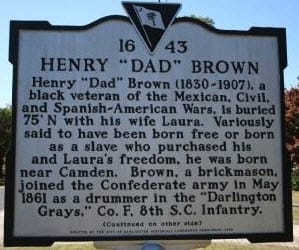
Lawrence Reese (HM)
West Broad Street Historic District (HM)
SC Western Railway Station (NR)
West Broad Street, Darlington
N 34° 17.924 W 079° 52.266
West Broad Street features several late- 19th to early 20th century residences designed and built by Lawrence Reese (1864-1915). a native of Marlboro County who came
to Darlington as a merchant by 1887. Reese, who had no formal training in architecture, was a self-taught master craftsman and designer.
The Belk Funeral Home, at 229 West Broad, was built ca. 1900 as a residence for Abraham Hyman and was Reese’s own favorite of the several houses he designed here.
The West Broad Street Historic District, listed in the National Register of Historic Places in 1988, features 14 houses designed and built by Lawrence Reese between ca. 1890 and ca. 1910, most of them with elaborate Eastlake, Queen Anne, and other Victorian era architectural elements. Reese also designed and built the South Carolina Western Railway Station on Russell Street, built in 1911 and listed in the National Register in 1988.
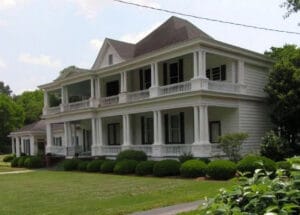
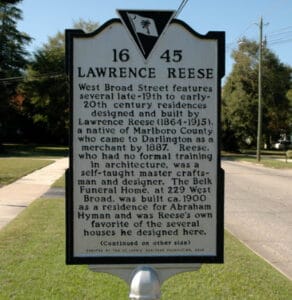
Macedonia Church (HM)
South Main Street, Darlington
N 34° 17.867 W 079° 52.045
Tradition says first meetings of this Baptist Church were held in the home of Laura Brown. A house of worship was constructed on the northeast corner of present S. Main and Hampton Streets on land purchased during 1866 – 1874. The present site was acquired in 1922 and the building occupied Feb. 3, 1935. This Baptist Church was constituted when a group of black members led by Rev. Isaac Brockington withdrew from the Darlington Baptist Church on Feb. 11, 1866.
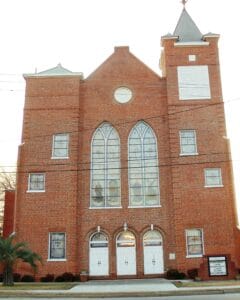
St. James United Methodist Church (HM)
Pearl Street, Darlington
N 34° 18.060 W 079° 52.483
This United Methodist Church was originally named Pearl Street Methodist Episcopal Church. The first trustees were Henry Brown, Abner Black, Wesley Dargan, Zeddidiah Dargan, January Felder, Randolph Hart, and the Rev. B. Frank Whittemore. Tradition says Federal occupation troops supplied the church bell, which they had taken from nearby St. John’s Academy. In 1866, this United Methodist Church was founded by freedmen with aid from the Methodist Episcopal Church Missionary Society. The minister was the Rev. Liverus Ackerman, and the first building, used as a school for freedmen, was completed April 1866.
Butler School (HM)
Sixth Street, Hartsville
N 34° 21.539 W 080° 04.206
Butler School, located on this site since 1921, was the second public school to serve Hartsville’s black community and operated for over sixty years. Known as Darlington Co. Training School until 1939, it was renamed for the Rev. Henry H. Butler, its principal from 1909 – 1946. The first building on this site burned in 1961; extant buildings date from 1936 to the mid – 1960’s. Butler School was a junior high and high school when it closed in 1982.

Zachariah W. Wines (HM)
Cheraw Street, Society Hill
N 34° 49.6188 W 079° 85.377
Black merchant and educator Zachariah Wines was born in 1847 in Society Hill, represented Darlington County in the S.C. House 1876 – 78, and was commissioned captain in the National Guard by Gov. Wade Hampton in 1877. He taught at nearby Waddell School and later served as Society Hill Postmaster, 1897 – 1904. He died in 1920 and is buried about 1/3 mile northeast.
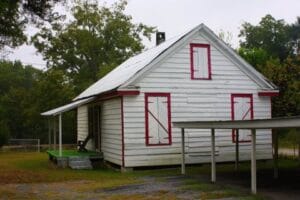
Selkirk Farm (NR)
Old Cashua Ferry Rd., near Little Rock, SC
N 34° 28.068 W 079° 3.0072
David Satterwhite was granted 177 acres here in 1789 by Charles Pinckney, Governor of S.C. In 1855, this tract passed into the hands of Rev. James A. Cousar, who added a three acre tract in 1858 on which he built the present house, gin house and the outbuildings. The name originated from a nearby post office which was discontinued in 1901.
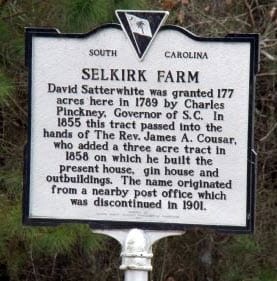
The Assassination of Rep. Alfred Rush (HM)
SC Secondary Roads 35 and 848, Effingham
N 34° 05.078 W 079° 50.924
Alfred Rush (d. 1876), an African – American state representative for two terms during Reconstruction, was assassinated near here, about 1/2 mi. from his home, on May 13, 1876. Rush, who represented what was then Darlington County in the S.C. House 1868 – 70 and 1874 – 76, he was also a deacon at Savannah Grove Baptist Church. Rush and his wife, returning home from a picnic at Mt. Carmel Church near Timmonsville, were ambushed by an unknown gunman. Rush was killed instantly. Several black Darlington County officials wrote Gov D.H. Chamberlain, “This was a cold blooded murder and our people are very much excited over it.”
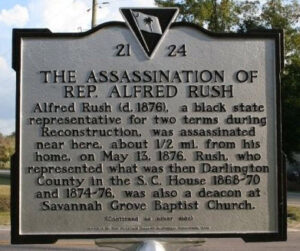
William H. Johnson Birthplace (HM)
Palmetto Street, Florence
N 34° 11.673 W 079° 45.183
William Henry Johnson (1901 – 1970), one of the most important African-American artists of the 20th century, was born nearby on Cox Street. His family later lived on the corner of Cheves and Kemp Streets. In 1918, at the age of 17, Johnson moved to New York City. Johnson studied at the National Academy of Design and the Cape Cod School of Art, won several prizes, and studied art in Europe from 1926 – 29.
Johnson, back in America in 1929 – 31, had paintings in several exhibits and a one-day show at the Florence Y.M.C.A. Visits to Florence inspired paintings of local people and places. In 1931, he married Danish artist Holcha Krake, living in Europe before returning to New York in 1938. After Johnson’s wife died in 1944, his health declined; he was institutionalized in New York in 1947 and died there in 1970.
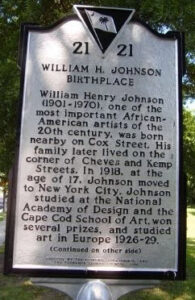
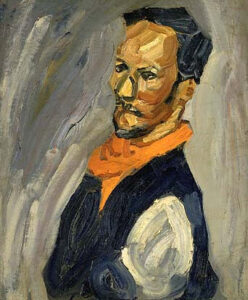
Roseville Plantation (HM)
Off North Williston Rd., Florence
N 34° 16.625 W 079° 42.181
Roseville Plantation was established by a royal grant before the American Revolution and a house was built ca. 1771 for the Dewitt family. Richard Brockington (d. ca. 1843), planter and state representative, purchased Roseville in 1821. Most of the house burned ca. 1832, and a second house was built on the original foundation for Brockington and his wife, Mary Hart, about 1835.
In the 1850s, the plantation passed to Brockington’s nephew, Peter Samuel Bacot (1810 – 1864), a planter whose daughter, Ada White Bacot Clarke (1832 – 1911), was born here and was later a Confederate nurse and diarist. The Clarkes remodeled the house ca. 1855 and ca. 1910. Roseville was restored by the Tucker family and listed in the National Register of Historic Places in 1997.
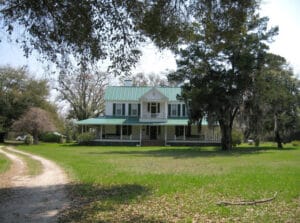
Roseville Plantation Slave and Freedman's Cemetery / Clarke Cemetery (HM)
Off North Williston Rd., Florence
N 34° 16.902 W 079° 42.156
This was originally the slave cemetery for Roseville Plantation. Roseville established about 1771 by the Dewitt family, was later owned by the Brockington, Bacot, and Clarke families from the 1820s through the Civil War. A 1200-acre plantation, it has more than 100 slaves living and planting cotton here by 1850. This cemetery is sometimes called “the Clarke Cemetery” after the family that owned Roseville from Reconstruction until 1948. It is about 150 feet square, and though it contains relatively few grave markers, it includes at least 150 and as many as 250 or more graves. Slaves, freedmen, and their descendants were buried here for two hundred years, from the 1770s to the 1970s.
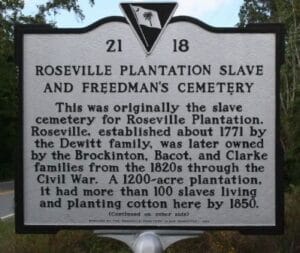
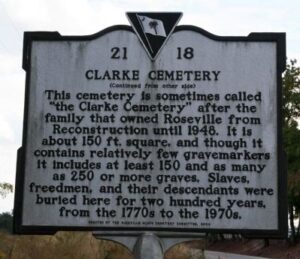
Greater St. James A.M.E. Church (HM)
339 Moore Street, Lake City
N 33° 86.6905 W 079° 76.4878
This church was founded in 1883 by Rev. Hill and twenty five charter members. Early services were held in a member’s house on E. Main Street. The congregation purchased a lot at the corner of Lake and N. Church Streets in 1885 and built its first sanctuary, a frame building, that year.
In 1951, the Rev. J.A. DeLaine (1898 – 1974) was transferred to Saint James from Pine Grove A.M.E. Church in Summerton, after playing a leading role in Briggs v. Elliott, the Clarendon County school desegregation case that led to Brown v. Board of Education (1954). Unknown persons burned the church in October 1955. The congregation built a new sanctuary here, called Greater St. James A.M.E. Church, dedicated in 1957.
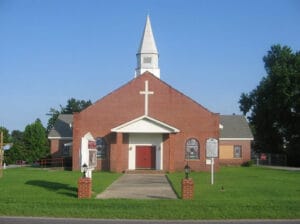
Hewn-Timber Cabins (HM)
Wallace Woods Rd., Francis Marion University, Florence
N 34° 11.766 W 079° 38.978
The African-Americans who built the two hewn-timber cabins that stand 200 yards south on Wallace Woods Road were brought to Mars Bluff as slaves in 1836. They lived in these cabins on the cotton plantation of J. Eli Gregg. These cabins are the last two of eight that originally stood in a cotton field at what is now the center of the university campus. The cabins, built of 4″ x 9″ hand-hewn timbers, feature precise full-dovetail joints and pine plank floors. They were enlarged after the Civil War. Freedmen and later tenant farmers lived in these houses until the 1950s.
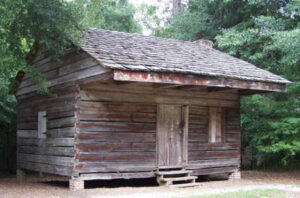
Jamestown (HM)
Jamestown Cemetery Road, Florence
N 34° 12.817 W 079° 36.699
This African-American community, which flourished here for 70 years, has its origins in a 105-acre tract bought in 1870 by former slave Ervin James (1815-1872). James, determined to own his own farm instead of being dependent on sharecropping or tenant farming, bought the tract from Eli McKissick and Mary Poston. His five sons and a son-in-law divided the tract into individual farms. Between 1870 and 1940, Ervin James’ descendants and other area families purchased additional land, creating a rural community of about 250 residents. Among its institutions were the Jamestown Cemetery, dating from its earliest days; the Summerville Methodist Church (renamed Bowers Chapel), established about 1880; and the Summerville Elementary School, built in 1926.
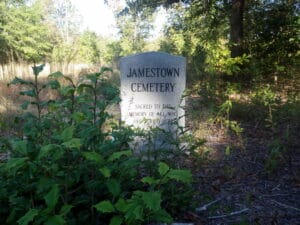
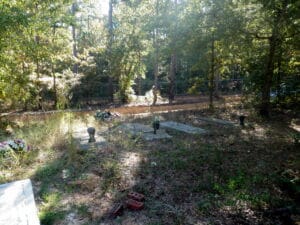
Mt. Zion Methodist Church (HM)
Liberty Chapel Rd, Florence
N 34° 10.759 W 079° 38.617
This church, founded in 1868 with the Rev. James Wesley Johnson as its first member, held its early services in a brush arbor. In 1870, trustees purchased this 1 ¾ acre tract to build a “Negro Schoolhouse” sponsored by the church, the first in the Mars Bluff community. This sanctuary, originally a frame building, was built in 1875 on a tract purchased from the school. The sanctuary was extensively remodeled and covered in brick veneer in 1970. The cemetery nearby, established in 1876, includes the graves of such early church members as Anthony H. Howard (1840 – 1908), a former slave who served in the S.C. House of Representatives during Reconstruction.
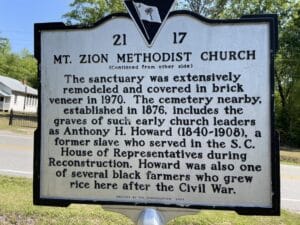
Mt. Zion Rosenwald School (HM)
5040 Liberty Chapel Rd, Florence
N 34° 10.777 W 079° 38.621
This school, built in 1925, was the first public school for African-American students in the Mars Bluff community. One of more than 5,000 school in the South funded in part by the Julius Rosenwald Foundation, it features a standard two-classroom plan typical of the rural schools built by the foundation between 1917 and 1932. The first school here, a private school built by Mt. Zion Methodist Church in 1870, burned in the early 1920s. Mt. Zion Rosenwald School usually operated on a four or five – month calendar in which two or three teachers taught grades 1 – 6. It closed in 1952 when a new Mars Bluff Consolidated School opened. This school was listed in the National Register of Historic Places in 2001.
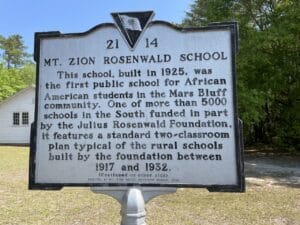
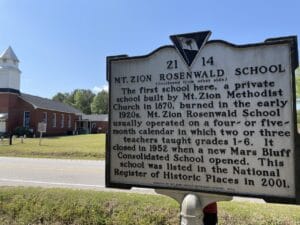
Birthplace of Mary McLeod Bethune
N 33° 58.239 W 080° 20.803
This noted humanitarian and educator was born five miles north of Mayesville on July 10, 1875. She was one of the first pupils at the Mayesville Mission School where she later served as a teacher. She died on May 18, 1955, and is buried at the Bethune-Cookman College.
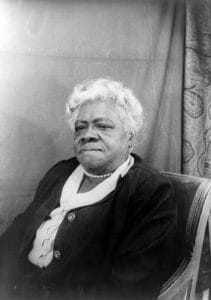
Dennis High School (HM)
West Cedar Lane, Bishopville
N 34° 13.451 W 080° 14.926
Dennis High School, built in 1936, was the first high school for African-American students in Lee County. Built on land donated by philanthropist Rebecca Dennis, it was named in her honor. This school was originally intended as an elementary school, but when the old elementary school burned shortly before this school opened, it became both an elementary school and high school.
The auditorium here was a significant social center for blacks throughout Lee County. It 1948, when a new Dennis High School opened it became Dennis Elementary School. In 1954, a state program to equalize funding for the black and white schools built a new Dennis High School was renovated and served as Dennis Primary School until it closed in 1970.
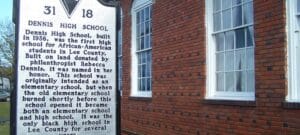
Taylor's Barber Shop (NR)
205 North Main Street, Marion
N 33° 86.6905 W 079° 76.4878
Taylor’s Barber Shop has been a fixture in Marion for over 100 years. The business was founded by the Rev. Thomas E. Taylor, who was known as the “white man’s barber” because he catered to white clientele. The barbershop had marble countertops, bootblack chairs, and private rooms with bathtubs for travelers passing through town. Rev. Taylor died in 1935. His barbershop is included in the Marion Historic District.
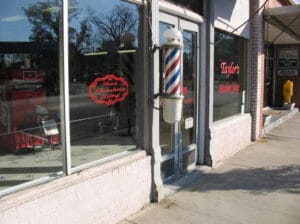
Mt. Olive Baptist Church (NR)
301 Church Street, Mullins
N 34° 21.0124 W 079° 25.0145
Wade Alston Ford, an African-American architect from Lake View, SC, designed and oversaw construction of this late Gothic Revival church. Five volunteer craftsmen built the cruciform church between 1922 and 1926. This is the second building to house the congregation, which was founded in 1882.
This church was founded in 182 by 16 charter members, all former slaves or the children of former slaves. It held services in a brush arbor and a cotton gin before building its first sanctuary in 1886 at Main and Marion Streets. The present sanctuary, designed by Negro architect Wade Alston Ford and built by members of the congregation in 1922 – 26, was listed in the National Register of Historic Places in 2000.
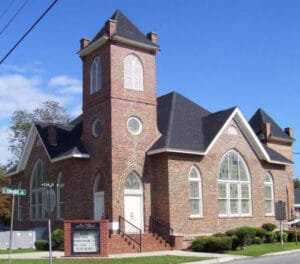
St. Michael's Methodist Church (NR)
116 Cheraw Street, Bennettsville
N 34° 61.6825 W 079° 68.7004
St. Michael’s Methodist Church was designed by prominent African-American architect Miller F. Whittaker and constructed c. 1922. Whittaker was a professor of mechanical arts at South Carolina State College who later served as president of the college (1932 – 1949).
Mt. Zion A.M.E. Church (HM)
SC Hwy 527, Andrews
N 33° 32.334 W 079° 35.819
This church was founded in 1867 on land donated by Moses and Matilda Watson. It was the first African-American church in the Bloomingvale community and was organized by trustees Orange Bruorton, Augusta Dicker, Sr., Fred Grant, Esau Green, Fortune Session, Moses Watson, and Richmond White. It was also mother church for Bruorton Chapel A.M.E. Church, active until the 1950s.
Mt. Zion also sponsored Mt. Zion School, which closed in 1958. The first sanctuary here, a wood frame church, was replaced in the early 1920s by a second wood frame church built by carpenter Rev. W.C. Ervin, Sr. The present church, the third serving Mt. Zion, was built 1948 – 1954 by carpenter Rev. W.C. Ervin, Jr. It was covered in brick veneer in the late 1950s.
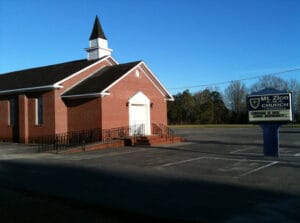
Cooper's Academy (HM)
512 Cades Rd, Cades
N 33° 45.72 W 079° 40.379
Cooper’s Academy, built in 1905 – 06, was a private boarding school for black children of this community until 1927, and a public school 1927 – 1958. Founded by Moses Cooper, H.J. Cooper, and Ada E. Martin, it was first called Cooper’s Academy, Normal and Industrial Institute for Colored Youth. The school closed in 1958 when black school at Battery Park and Cades were consolidated.
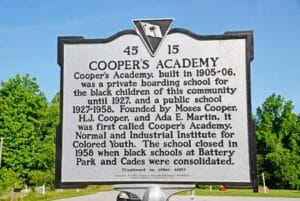
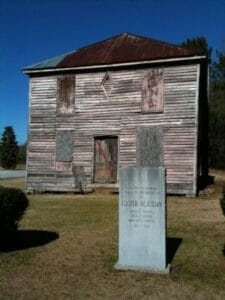
McCollum - Murray House (HM)
72 C.E. Murray Blvd., Greeleyville
N 34° 21.0142 W 079° 25.0145
This house, with Classical Revival architectural influences, was built ca. 1906 by Edward McCollum (1867 – 1942), African-American businessman and machinist with the Mallard Lumber Company. In 1922, when twelve-year-old Charles E. Murray’s father William died, McCollum and his wife Margaret (1886 – 1949) took him in.
Charles E. Murray (1910 – 1999), prominent African-American educator, lived here until 1922 when he died. A graduate of what is now S.C. State University, he taught at Thomlinson High in Kingstree 1929 – 41 and 1945 – 60. He was principal of the Williamsburg County Training School (renamed C.E. Murray Elementary and High School in 1972) from 1960 – 83.
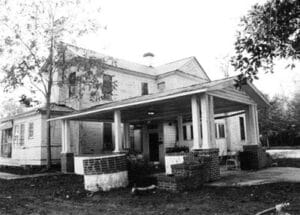
Stephen A. Swails House (HM)
Main and Brooks Streets, Kingstree
N 33° 39.921 W 079° 49.446
Stephen Atkins Swails (1832 – 1900), U.S. Army officer and state senator, lived in a house on this site from 1868 – 79. Swails, a free black from Pennsylvania, came to S.C. in 1863 as a first sergeant in the 54th Massachusetts Volunteers (Colored), the first black regiment organized in the North during the Civil War.
Swails, one of only about 100 black officers during the Civil War, was promoted to first lieutenant in 1865. Afterwards, he was an agent for the Freedmen’s Bureau and practiced law in Kingstree. He was a state senator in 1868 – 78 and served three terms as president pro tem. Swails was also intendant of Kingstree 1873 – 77.

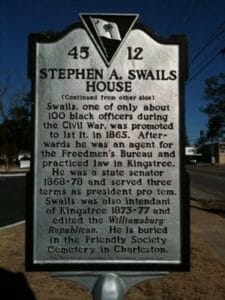
Lynching of Frazier Baker (HM)
433 S Church St, Lake City SC 29560
In the early morning of February 22, 1898, a mob in Lake City, South Carolina, set fire to the post office and opened fire on Postmaster Frazier B. Baker and his family as they tried to escape their burning home. Baker and his two-year-old daughter, Julia, were killed, while his wife Lavinia and several of their children were wounded. Baker’s appointment as the first African American postmaster in the predominantly white community had drawn months of racist hostility, including threats, arson, and baseless complaints about his work.
The attack drew national outrage and federal involvement after state authorities refused to act. Thirteen men were arrested and charged with conspiracy and civil rights violations, but securing witnesses proved nearly impossible. Despite indictments on twenty-four counts, an all-white jury deadlocked during the 1899 federal trial in Charleston. The judge declared a mistrial, and the case was never retried—leaving the Baker family without justice but marking a pivotal moment in the history of racial violence and civil rights in South Carolina.
